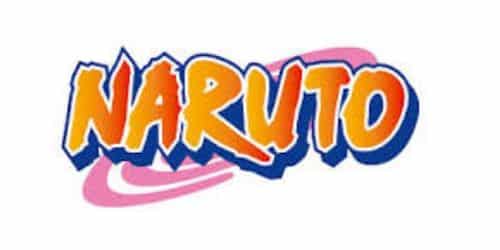If you love comics, chances are that you’ve seen the famous Japanese manga series, Nauto. It was a long one that ended in 2017, even though it officially began in 1997. The first series was released in 1991 by Masashi Kishimoto, who happens to be one of the best comics writers in Japan. Everything about the Naruto logo reviews the protagonist’s true nature, his energy, and his character. It also has colors that show very clearly the vision and mischievous nature of the young character, Naruto. In all, Naruto is a great comic and will continue to draw the attention of manga lovers. In all, the storyvealked the miniseries of the Japanese belief.
Naruto Logo Overview
Almost everywhere in the world, people can recognize the Naruto logo, which hasn’t changed much since it was first made. When the first collection of comic books was published, the logo was also created at that time. Nothing has changed about it at all since it was turned into a television series. The name of the main character, Naruto, is written in graffiti style on the logo. If you examine the Naruto logo in great detail, you will see that the letters are quite large and written in a cursive style. The Naruto logo primarily has two different hues. These are yellow and orange.
The primary protagonist has orange hair, and his outfits are orange as well. The letters are easy to tell apart because they come in white, black, or dark blue. The black gives the impression that the letter is in three dimensions, while the white serves as the letter’s outline. Because the letters are so close to one another, it may appear as though they are a single entity. In short, the Naruto logo has a lot of color and depth. It is perfect because it capture’s Naruto’s crazy energy. Behind the name, there are three pink ovals in a diagonal pattern. The letters cover most of the ovals. In addition to that, there is a Japanese name in crimson.
Meaning Of The Naruto Logo
The current logo for Naruto has colors that are vivid and eye-catching, which are perfect for a show that is aimed at a younger demographic. Aside from the color, every part of the Naruto logo shows something about the main character.
When it was first released in 1995, the Japanese manga series simply referred to as Naruto almost immediately became a craze all around the world. An anime series consisting of more than 200 episodes were made, and it was based on the manga.
The second volume of Masashi Kishimoto’s manga series was turned into the first episode of the 2007 TV show Naruto Shippuden. In the anime and manga series Naruto, a ninja named Naruto Uzumaki and the people who help him go on adventures.
Even though most of the people in Naruto’s village laugh at him, he still has the ambition to one day head the community and earn the respect of his fellow villagers. The popularity of Naruto’s story has led to the creation of a number of spinoffs, such as Boruto: Naruto’s Next Generations.
Naruto Logo Color
One of the things that make the Naruto emblem stand out is the color scheme that was chosen for it. The transition from yellow to orange that is used in the Naruto emblem itself is the component of its color scheme that stands out the most.
These brilliant color tones are symbolic of power, happiness, and assurance. The anime television show Naruto also makes extensive use of colors like these. The story’s main character, Naruto, is easy to spot thanks to his bright yellow hair and orange outfit.
The Kurama beast was successfully confined to a safe location within Naruto. The orange tones are appropriate given that it was a gigantic fox with nine tails. And Kurama has never been anything other than a nasty and capricious beast. Blazing was chosen because it is said to show aggression and power that can’t be matched.
To emphasize the orange and yellow gradient that is used in the logo, white and black outlines have been added around it. Because it is composed of complementary colors of yellow and black, the Naruto wordmark stands out in any setting. This contributes to the impression that it has depth.
The pink swirl in the background of the Naruto logo shows how playful the Naruto brand is. The whole color scheme we chose is meant to make people feel daring and excited. The Naruto logo is instantly recognizable and has a lot of allure to it.
People often use these kinds of colors to show things like strength, youth, hope, and excitement. The lack of color in the art style gives it a mysterious feel and could be seen as a metaphor for the difficult environment the main character is in.
Naruto Logo Typography
The Naruto font, like many other types that are used in other forms of media, was designed specifically for the series. Using a custom font with rounded corners, as well as a border and a shadow, gives the impression of depth.
This typeface, which consists of only uppercase letters, has a bold appearance and a lot of depth, which makes it resemble graffiti because of its aggressive aspect. The name “Naruto” is brought to the forefront thanks to some deft use of color and shade.
The bold lines of the Naruto typeface are a great way to show how memorable and outspoken the characters in the manga and anime are. The Naruto typeface was made to look like it was drawn by hand so that it would be more attractive.
Both the colors and fonts used in Naruto work well together to show how fierce and active the main ninja in the story is.
Who Designed The Naruto Logo?
Everyone who loves Naruto comics knows it is the intellectual work of Masashi Kishimoto. While it is true that the logo typeface was derived from the creator’s comics, no one actually knows who designed the logo. However, many believed it was Kishimoto, the original author of the series.
Naruto
Masashi Kishimoto created the Naruto manga and drew it. It tells the story of a young ninja, Naruto Uzumaki, an adolescent ninja who longs to earn the respect of his peers by rising to the rank of Hokage in his village. Ultimately, he was successful, but it wasn’t without effort. The tale begins with Naruto’s childhood and young adulthood. Not surprisingly, he grew taller throughout that period of time. I think his height is between 144 and 166.7 or more.
The series was based on the Japanese manga and anime Naruto (2001) and the Japanese novel Karakuri (1995), (1997). The truth is that Kishimoto’s career owes a great deal to the comic book series. In 2002, he received an honorable mention and was called a rising star in the manga industry for his work on the Naruto (2001) series, which was based on the Japanese manga Karakuri (1995). The truth is that Kishimoto’s professional success owes a lot to the comic book series. He earned an honorable mention in Shueisha’s monthly Hop Step Award in 2002 because of the series
Explosive Success
From 1999 to 2014, Naruto was first published in Shueisha’s Weekly Shonen Jump magazine as a series. The stories were later put into 72 books, or tankbon. From 2002 to 2007, Japan watched 220 episodes of a TV show made by Pierrot and Aniplex that was based on the manga. From 2005–2009, the series aired on Cartoon Network and YTV with an English dub. The Japanese sequel series Naruto: Shippuden ended after 500 episodes in 2017.
Starting in 2009 and running through 2011, Disney XD showed the first 98 episodes of the English translation. The English dub premiered on Adult Swim’s Toonami block in January 2014 with the first episode. Adult Swim still features weekly English-dubbed episodes. The first episode of the Viz Media-produced anime series debuted on Neon Alley in December 2012, and the series concluded three years later, in March 2016, with 338 episodes. In addition to the anime series, Pierrot has made 12 original video animations (OVAs) and 11 feature films.
After Viz Media got the rights to make the manga and anime in North America, they were put out in parts in the online magazine Weekly Shonen Jump. The United States and Canada were the first to air the anime series in 2005, followed by the United Kingdom in 2006 and Australia in 2007.
How Many Wins Did Naruto Score?
There were undoubtedly many noteworthy achievements in the comic medium.
For instance, nearly 250 million copies were in circulation across 47 different nations and regions. They number in the 153 million range in Japan alone. The remaining 97 million copies are being sent to other countries throughout the world. It is one of the most popular series published by Viz Media, with the English translations appearing on the bestseller lists of major newspapers, including The New York Times and USA Today, and with volume seven winning a Quill Award in 2006.
Are There Critics Against Naruto Manga?
Naruto has a huge number of fans all over the world, but it also has some people who don’t like it. The criticism leveled at comics, however, was not very weighty. Misunderstandings on an individual level Some people complained that the action sequences lingered on too long. Critics have also said that the coming-of-age manga makes references to Confucianism and Japanese mythology.
Masashi Kishimoto is the original author of Naruto. He was born on November 8, 1974. Masashi is a well-known Japanese manga artist. As of May 2019, his manga series Naruto, which ran from 1999 to 2014, had sold over 250 million copies globally in 46 countries. They have been turned into two anime, as well as numerous films, video games, and other forms of media. That was the breakthrough in his career and many awards and recognition. Kishimoto has also been in charge of the two official anime movies about Naruto, The Last: Naruto the Movie and Boruto: Naruto the Movie, and has written a number of one-shot stories. He has authored several other series, but the most renowned of them all is Naruto. Samurai 8, Boruto, and other popular series that he wrote or helped make are examples of his other work.
Why Manga Series?
Well, one’s environment has a way of shaping our ideas and belief systems. For Kishimoto, growing up is about reading manga and listening to his grandfather’s tales about the wars in Japan. This was what built the desire in him. According to him, the inspiration behind Naruto was Akira Toriyama and Katsuhiro Otomo, his main influences.
How Well Do You Know Naruto’s Mythology And Religion?
Unless your family tree goes back to the Japanese, I thought you liked comics and didn’t care much about religion. Anyway, relax, some Japanese mythology is visible in Naruto. Let’s check out some of this series’ religious elements.
In the world of Naruto, there are monsters with tails that are referred to as Bijuu. History says that they are monsters with too much chakra energy. One of these creatures is the Kyuubi, which is a nine-tailed fox. Another is the Rokubi, which is a six-tailed weasel.
What Kind of Connection Does This Have To The Mythology of Japan?
You might find it interesting to learn that in Japanese mythology, the Bijuu are considered to be demons. In the manga and anime series, these demons are imprisoned inside newborn babies as a means of protecting the world from the destruction they would otherwise cause. The majority of Naruto’s most important plot points are taken directly from Buddhist mythologies.
Other Naruto Mythology
- The chakra energy that they are able to harness possesses five different natures, as described by Naruto: earth, fire, air, water, and light.
- The ability to control chakras in Naruto is based on hand seals, which are also used in Buddhist and Hindu practices. In the real world, hand seals are used. These seals can be traced back to the Chinese Zodiac sign, which served as their inspiration.
- Jinchuriki is humans who have a tail-like beast hidden deep within them, and Naruto Uzumaki is one such person.
- In mythology, the number of tails a kitsune (fox) has is correlated with its age, wisdom, and power; Naruto makes use of this concept in reference to the nine-tailed fox throughout the series.
- Son Goku is a four-headed beast that belongs to Naruto and is named after the Monkey King from Chinese mythology.
- The Gyuki, also known as the eight-tailed beast, is a hybrid animal that resembles a cross between an ox and an octopus,, and was given its name after a monster that appears in Japanese folklore.
- The character of the Shinigami in Naruto is a reaper who is modeled after the gods of death in Japanese mythology,
- Naruto’s Shintoism and the Jashin cult are both represented in Naruto in some form or another.
- The abilities of the Uchiha are named after gods from the Shintoist creation myth.
- Amaterasu, the Sun Goddess, and other Japanese mythological gods and goddesses show up in Naruto as characters or sources of Jutsu.
- The eight chakras in Hinduism served as inspiration for the eight gates.
- Naruto is one of the most well-known anime series of all time, but there are some interesting things about the show’s origins, its stories, and its characters that you might not know.
Naruto Belief
- As a result of the Japanese cultural notion that one’s blood type can be linked to certain aspects of one’s personality, Naruto Uzumaki has type B blood.
- Ichiraku, the name of Naruto’s favorite ramen shop, is a real-life establishment that can be found in the prefecture of Kyushu.
- It was never intended for Naruto to have the skills of a ninja; rather, he was to have the ability to cast spells.
- This one is pretty funny all things considered. Do you know that each of the toads is named after a well-known Japanese actor from the 1980s?
- Because it took him so much time to write and draw the volumes, Masashi Kishimoto had to delay his honeymoon for more than ten years before he could finally go on his trip.
- The character Sanji from the competing anime One Piece was going to have his name changed to Naruto at one point. However, because Naruto was released first, the name had to be changed.
- Sarutobi and Minato were appointed Hokage before the age of 23, whereas Naruto was 27 when he was given the position. Naruto is not the youngest shinobi to be given the Hokage position.
- The combination of yellow and red hair creates orange, and Naruto’s clothes are orange as a tribute to his parents, who both had yellow and red hair.
- The graduation exam at the academy was Naruto’s target, but he failed it three times.
- Because Naruto’s mother was known as the ‘Red Hot-Blooded Habanero,’ and his father was known as the ‘Yellow Flash,’ after Naruto became Hokage, his nickname was changed to ‘Konoha’s Orange Hokage.’ This was due to the fact that Naruto’s father was known as the ‘Yellow Flash.’
Facts About Naruto
- What exactly do you know about one of the world’s most-watched manga series, Naruto? Come on, let’s check out some of the facts every Naruto lover ought to know.
- To begin, after One Piece, Dragon Ball, and Golgo 13, Naruto is the fourth best-selling manga series in the world.
- Masashi Kishimoto, the creator of Naruto, was born on November 8, 1974, in Okayama, Japan.
- Naruto was born in the fictitious community of Konohagakure, which translates to Hidden Leaf Village in English.
- When a nine-tailed fox attacked the Hidden Leaf Village, Naruto’s parents gave their lives to protect him.
- As a result of the attack in his home village, Naruto genuinely has the nine-tailed fox caged inside of him, which is why many of the other villagers loathed him as a child.
- Naruto frequently alludes to other manga and anime throughout the series.
About Naruto
- During the first few episodes of the anime, Naruto joins a ninja unit known as Team 7. The group consists of Sasuke Uchiha, Sakura Haruno, and Naruto, and is led by the series’ teacher, Kakashi Hatake.
- Naruto Shippuden is a sequel to the original Naruto anime series.
- In Naruto, Ninjas use chakra energy from within their cells to conduct Ninjutsu or Genjutsu.
- The city of Naruto in Japan was established on March 15, 1947; hence, the name Naruto.
- Genin, Chunin, Jounin, and Hokage are the four ninja ranks in Naruto’s world.
- The Naruto manga has sold more than 100 million copies in Japan alone
- In July 2015, Lionsgate revealed that they would be making a live-action adaptation of the Naruto manga.
- Junko Takeuchi (in Japan) and Maile Flanagan (in the United States) provided the voices for Naruto Uzumaki
- The first episodes of the anime series debuted in the United States and Canada in 2005, although they didn’t air there until the following year
- The manga novels have been published and sold in 46 different countries
- Viz Media is the largest publisher of manga and anime in North America.
Who Created Naruto Comics?
Masashi Kishimoto is the one who came up with the idea for the popular manga series Naruto back in 1995. The story was the basis for the second season of the anime TV show, which came out in 2002 and had a total of 220 episodes.
What Is The Full Name Of Naruto?
Naruto’s full name is Uzumaki Naruto. Many argue that since his father’s name is Minato Namikaze, his name should have been Naruto Namikaze. This brings us to another striking question: why is Naruto using his mother’s surname instead of that of his father? Well, this is a little mystery that we can unravel.
Why Is Naruto Using His Father’s Surname Instead Of His Father?
Minato Namikaze and Kushina Uzumaki are the biological parents of Naruto. Since ancient times, the Uzumaki family has been known throughout the land as the Jinchuriki, which is Japanese for “nine-tailed beast.” The people of the village had a lot of respect for Minato Namikaze, who was the fourth Hokage of Konohagakure.
Minato has made a lot of enemies during his time as Hokage, which is a shame. There was a lot of unrest around the time that Minato’s son Naruto was born, and Minato was willing to do anything to protect both his son and the village. The main character was given the last name Uzumaki so that people wouldn’t think he was Minato’s son. This was done so as to prevent any confusion. This was the primary reason why Hiruzen, who was given the responsibility of caring for Minato’s child, was given the family name Uzumaki, his mother’s family name, instead of Namikaze.
Is Naruto Real Japanese?
Yes, it is. According to Kaphinated, (https://kaphinated.livejournal.com/62986.html),) a significant portion of the Naruto universe, particularly the functioning of ninjutsu, is inspired by Buddhist folklore and mythology. Shintoism and Buddhism are the two most prominent religions practiced in Japan today, and the majority of Japanese people do not consider it problematic to claim both of these faiths as their own. Their worldviews are not incompatible with one another, and both contribute significantly to defining what it means to be spiritual and making sense of the world as it is.
Why is Naruto Called Naruto?
Jiraiya got the name “Naruto” for one of the characters in the series from a topping on ramen called “narutomaki,” which is also the origin of the name “Naruto.”
Who is the Orange Hokage?
The orange Hokage is none other than Naruto Uzumaki, the main character of the comic series, Naruto. As soon as he was promoted to the position of Hokage, he began referring to himself as the “Orange Hokage.” Personally, I was wondering if the name Orange Hokage is the reason why the protagonist is always in orange clothes. However, many believe Naruto’s orange clothing is a nod to his parents, who both had yellow and red hair, which when combined creates orange.
How Many kills Does Naruto Have?
When it comes to actual people, Naruto Uzumaki has only killed one—a Sand Village Jonin by the name of Yura. At first, Yura was taken at face value as a reliable council member. However, it was later discovered that he was actually a covert agent for the Akatsuki.
Conclusion
Without a doubt, the Naruto logo reveals a lot about the main character of the comic series. However, there are other hidden facts that the logo did not highlight, and some of these are the symbols of the clans. In all, Naruto was worth the time spent watching each episode and waiting for the release of the next one.
Related Articles
- NFL LOGO: Meaning, Evolution, and History
- BREWERS LOGO: What Is Hidden in the Milwaukee Brewers Logo, Meaning and History
- GOLDEN STATE WARRIORS LOGO: Meaning, Tickets, Rumors, and History
- CLEVELAND GUARDIANS LOGO: History, Ideas, Evolution, Meaning






